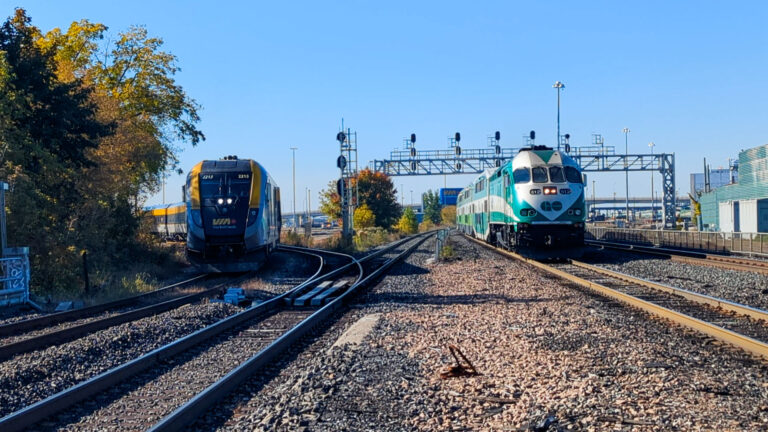Having managed to install the track the previous evening, I planned to spend this night testing, tuning and removing/adding ties. I found that there was a kink at one of the joins along the spur at the rear of the layout, so I tried filing it back to scale. This was fruitless, as when I checked the rail spacing, I realized that the rails were about 1/16 too close ‘ far too out of gage to be tuned, so I grabbed the rail nippers and cut the rails behind the joint. It’s at this point the evening started to go badly. No sooner had I cut the rails then the track on the rear of the layout sprang free from the roadbed.
It seems that the caulking didn’t stick to the roadbed.
To explain: I had to raise the grade of the track while I was installing the upper rails, so I decided to try a package of Woodland Scenics roadbed that I had kicking around the basement. This product bills itself as the quieter alternative to conventional cork roadbed and is significantly cheaper. However, having tried it I can honestly say that I feel this is an inferior product!
Firstly, the roadbed was foam, which is great for sound dampening, but offered no structural support/rigidity for rail spikes etc. Secondly, no common adhesive bonded to the roadbed’s surface. The caulking peeled away easily from the surface, as did the white glue, and CA pooled into a crusty lump. Finally, I don’t know how the surface of the foam is going to react to solvent-based paints.
Despite these headaches, I managed to reinstall the track and remove some of the ties on the ‘loop’. I’m very pleased with how well the track turned out around the loop, as the caulking held fast after removing every other tie, and the appearance was very convincing. I will definitely try this technique again on the next layout.






























